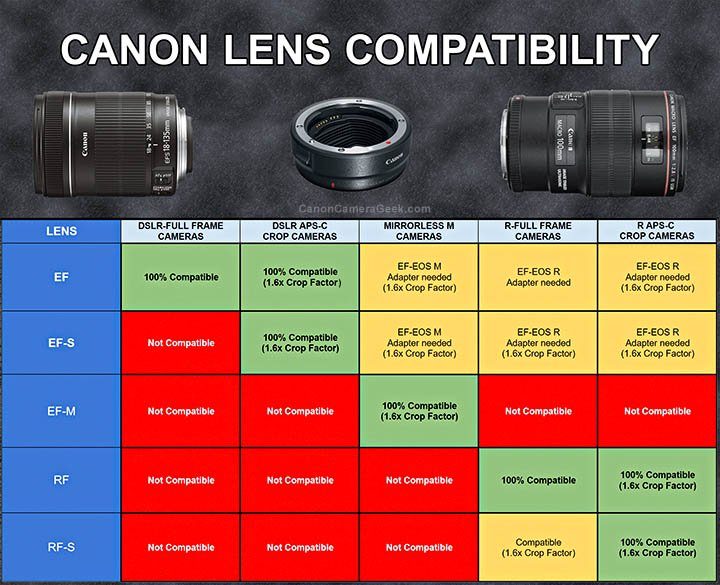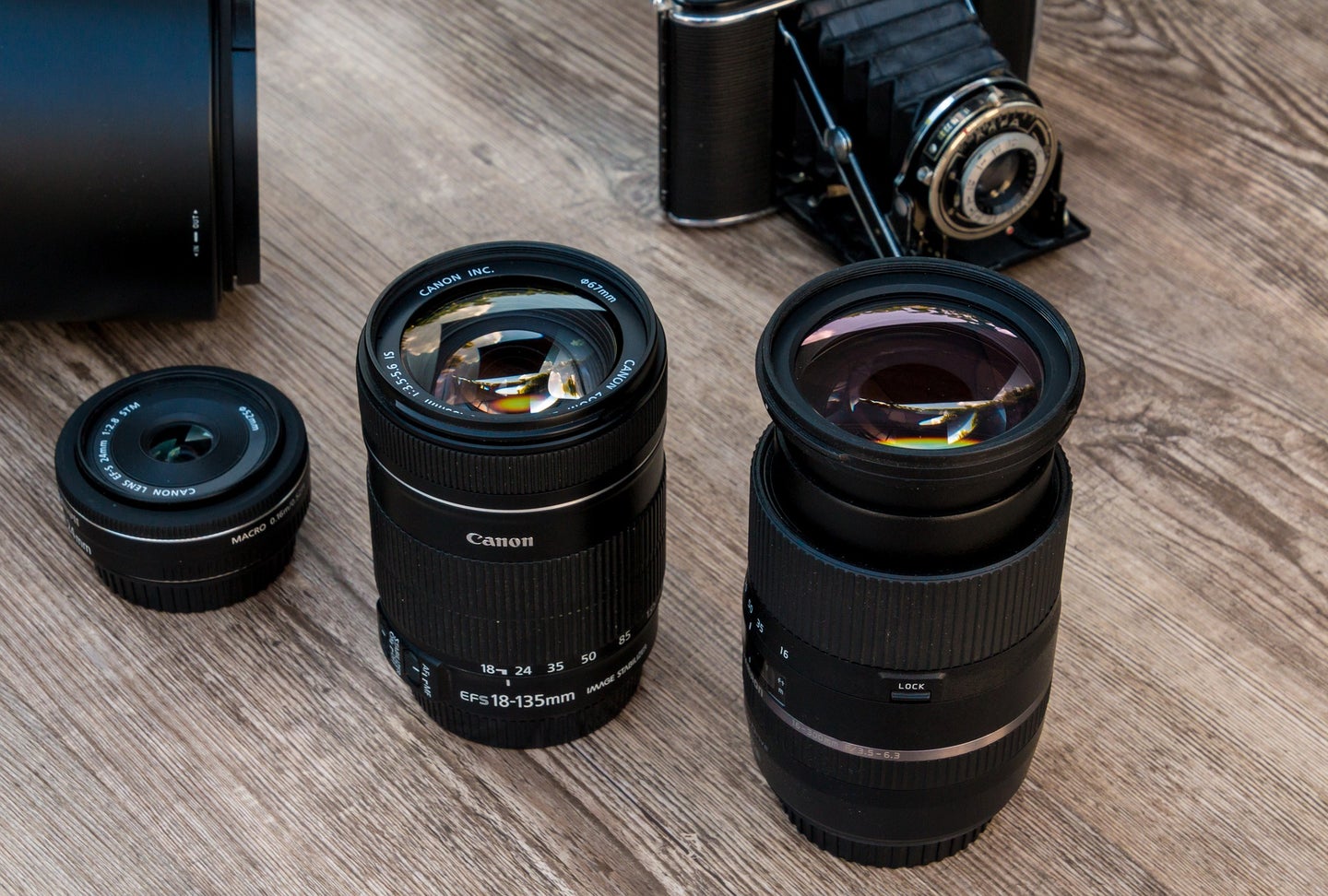Not all lenses fit all cameras. Compatibility depends on the camera and lens mount type.
Understanding which lenses work with your camera can enhance your photography skills. Photography enthusiasts often face the challenge of choosing the right lens. With a variety of camera brands and lens mounts, finding compatible equipment can be tricky. Each camera has specific requirements that dictate lens compatibility.
Different brands have different systems, making it crucial to know your camera’s specifications. This guide will help you understand lens compatibility, focusing on the types of mounts and popular brands. Whether you’re a beginner or a seasoned photographer, knowing which lenses fit your camera can improve your photos and make your photography experience more enjoyable. Let’s explore the world of camera lenses and discover which ones suit your equipment best.
Table of Contents
Introduction To Lens Compatibility
Camera lenses are important. They shape the way photos look. Each lens has a unique purpose. Some lenses zoom in close. Others capture wide scenes. Choosing the right lens is crucial. A good lens makes photos clear and bright.
Not all lenses fit every camera. Each camera brand has specific lens types. This is why compatibility matters. Using the wrong lens can cause problems. Photos might not be sharp. The camera might not work right. Always check if a lens fits your camera. This ensures you get the best results.

Credit: www.canoncamerageek.com
Types Of Camera Mounts
Bayonet mounts are very popular. They are used in many cameras. These mounts have three or more flanges. The lens connects with a twist. It is easy and quick. Secure connection is important. It prevents the lens from falling. Many modern cameras use bayonet mounts. They help in fast lens changes. This makes them a favorite choice.
Screw mounts are older. They have a simple design. The lens screws onto the camera body. It takes more time to change. These mounts are common in older cameras. Some people still use them. They like the classic feel. Screw mounts are also called threaded mounts. They provide a stable connection. But not as fast as bayonet mounts.
Brand-specific Mounts
Canon uses different lens mounts for its cameras. EF mount is for full-frame DSLR cameras. APS-C DSLR cameras use the EF-S mount. Mirrorless cameras need an RF mount. Each mount is unique. Not interchangeable. Each Canon camera has its specific lens type. Using the wrong lens won’t work.
Nikon also has unique lens mounts. F-mount is for Nikon’s DSLR cameras. Z-mount fits Nikon’s mirrorless cameras. Each Nikon lens must match its camera. No mix and match. Using the wrong lens can damage the camera. Each mount serves a specific purpose.
Third-party Lenses
Third-party lens brands are popular among photographers. These brands offer affordable and versatile options. Sigma and Tamron are leading names. Both brands produce lenses for many camera types. Tokina is also well-known. It provides lenses with unique features. Rokinon is famous for its wide-angle lenses. Photographers love these for landscape shots.
Third-party lenses often cost less than brand-name lenses. This makes them a budget-friendly choice. They offer variety in lens types and designs. Some provide special features not found in brand lenses. Compatibility with different cameras is high. Many third-party lenses deliver excellent image quality. Photographers can explore different styles with these lenses. The flexibility of third-party lenses is a big advantage.
Adapters And Converters
Adapters help different lenses fit different cameras. They are small but important. Adapters connect your lens and camera. They create a bridge. Some adapters let you use focus and zoom. But not all. Check your adapter’s abilities. Some keep the lens’ full features. Others do not. Always read the instructions. Know what your adapter can do. This keeps your photos great.
Not every adapter works with every lens. Some may not fit well. Size and weight can change your camera’s balance. Adapters might affect image quality. Sometimes, autofocus slows down. Or it might not work at all. Manual focus is needed at times. Be ready for these changes. Adapters also cost money. Check your budget first. Think of what you need. Make smart choices for your camera.
Impact Of Sensor Size
Full-frame sensors are bigger. They capture more light and detail. Crop sensors are smaller. They have less coverage. Lenses made for full-frame cameras offer wide views. On crop sensors, the view narrows. This is called the crop factor. It affects the image size.
Lenses cover different areas. Vignetting happens when the lens can’t cover the whole sensor. It causes dark corners. Full-frame lenses on crop sensors may reduce vignetting. Crop sensor lenses on full-frame cameras often increase it. It’s important to check lens compatibility. Always consider sensor size. This ensures proper fit and image quality. Lenses and sensors must match for best results.
Autofocus And Aperture Control
Not all lenses work with every camera’s autofocus system. Some lenses need special mounts. These mounts help the lens fit right. Older lenses might need adapters. Adapters can help them focus better. But, sometimes they make it slower. Newer lenses are often faster. They fit most modern cameras well. Always check if a lens is compatible before buying. This saves time and trouble later.
Aperture controls how much light enters the camera. Not all lenses have automatic control. Some need manual settings. Manual settings can be tricky. Modern cameras often need lenses with electronic connections. These connections help with automatic aperture settings. Electronic lenses give more control and ease. They make taking pictures fun and simple. Always ensure your camera and lens can talk to each other. This ensures smooth aperture control.

Credit: www.popphoto.com
Future Of Lens Compatibility
Camera technology changes fast. New cameras are being made. These cameras are smarter. They can do more. Lens compatibility is a big thing. New lenses need to fit many cameras. This helps photographers a lot.
Some cameras may use special adapters. These adapters help lenses fit. More companies are making them. This makes it easier for users. They can use different lenses.
New ideas are coming for lenses. Auto-focus is getting better. Lenses are getting smaller. They are also lighter. This helps people carry them easily. Some lenses might use smart technology. They can change settings by themselves.
Future lenses might have better zoom. They might also have better clarity. People can take clearer pictures. These changes will make photography more fun.

Credit: www.reddit.com
Frequently Asked Questions
How Do I Know If A Lens Will Fit My Camera?
Check your camera’s mount type. Match it with the lens mount type for compatibility. Consult your camera’s manual or manufacturer’s website for details. Ensure the lens is designed for your camera’s sensor size, like full-frame or APS-C. Verify electronic and autofocus compatibility for optimal performance.
Can You Fit Any Lens On Any Camera?
Not all lenses fit every camera. Compatibility depends on the mount type and brand. Use adapters for cross-brand lenses. Always check camera specifications for compatible lenses.
How Do I Know What Lens Mount My Camera Has?
Check your camera’s manual or model number for lens mount details. Search online using your camera model. Look at the lens mount area for brand-specific markings.
How Universal Are Camera Lenses?
Camera lenses vary in compatibility across brands and models. Many lenses fit multiple cameras using adapters. Universal compatibility isn’t guaranteed, but third-party lenses often support various systems. Always check lens specifications for compatibility with your camera body before purchase.
Conclusion
Lenses and cameras do not always match perfectly. Different brands have unique mounts. Compatibility varies among types and models. Research before buying a new lens. Consider your camera’s specifications carefully. Check if adapters can help. They might solve some compatibility issues.
Plan purchases to avoid disappointment later. Understanding lens and camera compatibility saves time and money. It’s essential for photography enthusiasts. Correct fit enhances your photo quality. Improves your shooting experience significantly. Always choose wisely for your needs. Happy shooting!